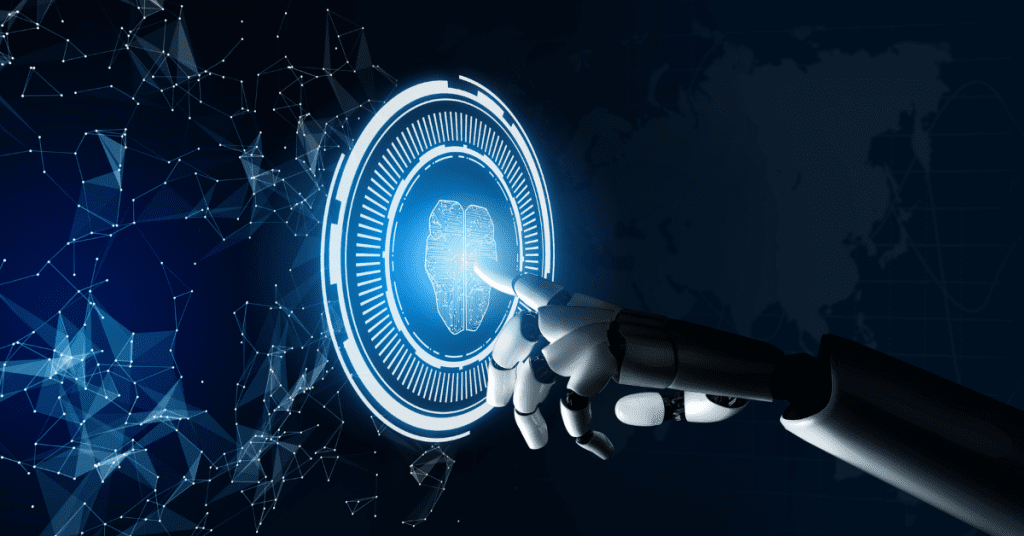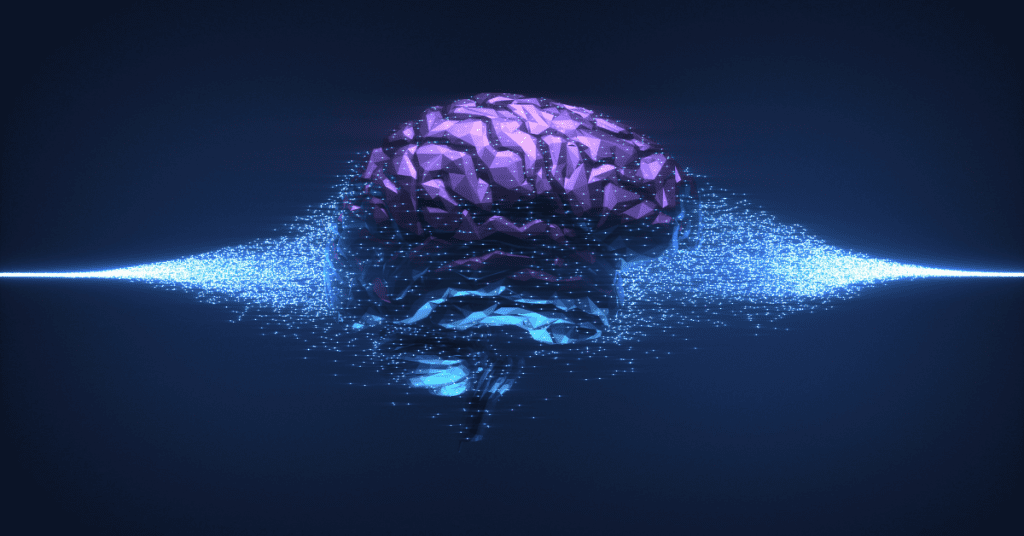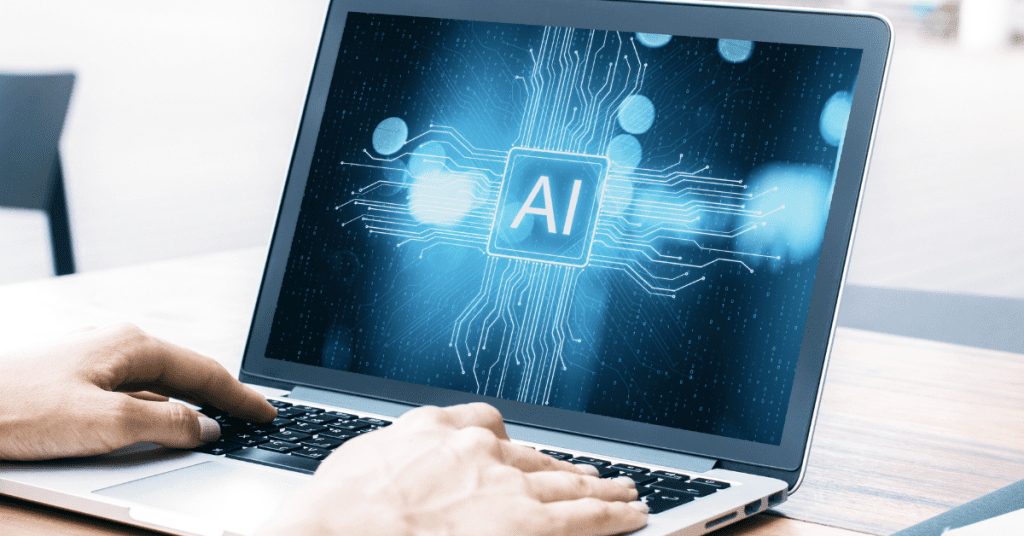Deep Learning vs. Machine Learning: What Sets Them Apart
Industry Trends & Innovation
Read Time: 15 mins

Introduction
Even if you're not particularly into data science, by now you must have definitely heard about artificial intelligence, machine learning, and deep learning. These are frequently used terms and sometimes even used to exchange with one another. Still, all of them have a pretty distinct meaning while all of them relate to one another. The article will take readers through the intriguing world of AI, machine learning, and deep learning and see what makes them different.Understanding Artificial Intelligence, Machine Learning, and Deep Learning
Imagine AI, machine learning, deep learning, and neural networks as a series of ever-narrowing concentric circles, each fitting snugly within the larger one. At the widest circle, you have artificial intelligence (AI) – the grand umbrella covering everything. Tucked within AI is machine learning, a specialized subset. Deeper still is deep learning, a focused branch of machine learning, and at the core of it all are neural networks, the essential building blocks of deep learning. To break it down further, AI is the broadest system, encompassing all the others. Machine learning operates within AI as a subset, applying algorithms to learn from data. Deep learning delves deeper within machine learning, utilizing complex structures called neural networks. The key difference that sets deep learning apart is the sheer number of layers, or the "depth," within these neural networks. A single neural network becomes a deep learning model only when it boasts more than three layers of nodes.Basics of Machine Learning

Definition of Machine Learning
Machine Learning is the broad term for when computers gain knowledge from data. It represents the blend of computer science and statistics, where algorithms are crafted to perform specific tasks without direct programming. Instead of following strict instructions, these algorithms detect patterns in data and make predictions as new information comes in. Essentially, the learning journey of these algorithms can be categorized into two main types: supervised and unsupervised learning. This distinction depends on the kind of data used to train the algorithms. Supervised learning involves guiding the algorithm with labeled data, while unsupervised learning lets the algorithm uncover hidden patterns in unlabeled data, making the learning process both versatile and fascinating.Key Components of Machine Learning
Every machine learning algorithm is built upon three key components:- Representation: This refers to the structure of the model and how it represents knowledge.
- Evaluation: This is about assessing the quality of different models and determining how well they perform.
- Optimization: This involves the methods used to discover effective models and generate the most efficient programs.
Supervised vs Unsupervised Learning
The primary distinction between supervised and unsupervised machine learning lies in the type of data they utilize. Supervised learning relies on labeled training data, whereas unsupervised learning operates without it. To put it simply, supervised learning models start with a baseline understanding of the correct output values. In supervised learning, an algorithm trains itself using a sample dataset to make predictions, continuously tweaking itself to minimize errors. These datasets come with labels that provide context, allowing the model to produce a "correct" answer. Conversely, unsupervised learning algorithms independently uncover the inherent structure of the data without any explicit guidance. You feed the algorithm unlabeled input data, and it identifies natural patterns within the dataset. While the type of data used is perhaps the most straightforward way to draw a distinction between these approaches, they also differ in their goals and applications. Models developed using supervised learning try to learn how input and output data are related. For example, a flight time supervised model could be estimated by variables such as weather conditions, time of the day considering peak flight hours, and population or density around airports. In contrast, unsupervised learning is great at discovering new patterns and relationships from raw, unlabeled data. For instance, these models can cluster groups of buyers purchasing related products to recommend other items to similar customers.Popular Machine Learning Algorithms
Here are the top 10 most commonly used Machine Learning (ML) algorithms:- Linear Regression
- Logistic Regression
- Decision Tree
- Support Vector Machine (SVM)
- Naive Bayes
- K-Nearest Neighbors (KNN)
- K-Means Clustering
- Random Forest
- Dimensionality Reduction Techniques
- Gradient Boosting and AdaBoost Algorithms
Basics of Deep Learning

Definition of Deep Learning
Deep learning refers to a subdomain of machine learning that includes the use of artificial neural networks in processing and analyzing information. These neural networks are structured in multiple layers within deep learning algorithms, which consist of computational nodes. Each of these various neural networks has an input layer, but sometimes an output layer and only a few in between. If the neural network is composed of three or more layers, then it would be considered "deep," connecting to the name for deep learning. Deep learning algorithms, in design, mirror the structure of the human brain while analyzing data in nearly any logical pattern. These algorithms are good at doing all types of tasks that we generally associate with AI today: image and speech recognition, object detection, and natural language processing. What really distinguishes deep learning is the ability to deal with complex, nonlinear relationships in data sets. Then again, that comes at a cost: deep learning requires much more training data and important computational resources than earlier machine learning techniques.Key Components of Deep Learning
The building blocks of deep learning are neural networks, algorithms, and vast amounts of data.- Neural Networks: Central to deep learning, neural networks emulate the human brain's structure. These networks consist of layers filled with interconnected nodes, or "neurons," each tasked with processing different elements of the data. The term "depth" in deep learning refers to the number of these layers. As data flows through each layer, it becomes more abstract yet increasingly informative about the original input.
- Algorithms: Algorithms dictate how neural networks process and learn from the data. They work through complicated mathematical calculations to manipulate weights and biases within the network. This refines the predictive accuracy of the model. Some very basic key algorithms in deep learning would then be backpropagation and gradient descent.
- Data: Deep learning models are trained on a lot of data. The process involves inputting data into the model, which learns by adjusting the weights and biases to reduce the difference between its predictions and actual outcomes. With every iteration of learning, it improves in accuracy as more data is processed.
Neural Networks Explained
The architecture of neural networks draws inspiration from the human brain. Brain cells, or neurons, create a dense, highly interconnected network, transmitting electrical signals to facilitate information processing. Similarly, artificial neural networks are composed of artificial neurons, or nodes, working in unison to tackle problems. These artificial neurons are software modules, while the neural networks themselves are algorithms that utilize computing systems to perform mathematical calculations. There are some common neural networks that find their employment in deep learning:- Feedforward Neural Networks (FF): This is a very early variety of neural networks in which data only moves in one way, through artificial neurons arranged in layers to the output.
- Recurrent Neural Networks (RNN): In contrast to the feedforward type of networks, RNNs deal with time series data or sequences. They preserve "memory" about the information conveyed by previous layers that impact the outcome of the current layer.
- Long/Short Term Memory (LSTM): While being an advanced form of RNN, LSTMs are able to "remember" information from the previous layers before it, thereby improving its memory.
- Convolutional Neural Networks: With a variety of distinct layers, including convolutional and pooling layers, CNNs help extract the parts relevant for image processing and then combine them in the fully connected layer to support a large proportion of modern AI.
- Generative Adversarial Networks: A method involving two neural networks, a "generator" and a "discriminator," engaged in a competitive game that refines the accuracy of the output.
H3 Popular Deep Learning Architectures
- VGG Net
- AlexNet
- ResNet
- ResNeXt
- RCNN (Region Based CNN)
- YOLO (You Only Look Once)
- SegNet
- SqueezeNet
- GoogleNet
- GAN (Generative Adversarial Network)
Key Differences Between Machine Learning and Deep Learning

Data Requirements
Due to their complexity and the need for larger datasets, deep learning models demand significantly more storage and computational power than traditional machine learning models. While machine learning data and models can often operate on a single instance or a modest server cluster, deep learning models typically require high-performance clusters and robust infrastructure. The infrastructure needed for deep learning solutions can lead to much higher costs compared to machine learning. Maintaining on-site infrastructure for deep learning may not be practical or economical. To manage expenses, you can leverage scalable infrastructure and fully managed deep learning services, which offer a more flexible and cost-effective solution.Feature Engineering
Traditional machine learning often relies on feature engineering, where humans manually select, extract, and assign weights to features from raw data. Deep learning, on the other hand, automates much of this process, requiring minimal human intervention. Deep learning’s neural network architecture is inherently more complex, inspired by the human brain's functioning. These networks use nodes to represent neurons and consist of multiple layers, three or more, between the input and output layers. Each node in a deep neural network independently assigns weights to features, processing information from input to output in a forward direction. Once the data flows through the network, the predicted output is compared to the actual output, and the error is calculated. This error is then backpropagated through the network, adjusting the weights of the neurons to improve accuracy. Due to this automatic weighting process, the depth of the network layers, and the sophisticated techniques employed, deep learning models must solve far more operations than traditional machine learning models. This complexity and depth enable deep learning to handle intricate tasks but also demand significantly greater computational resources.Training Methods
Machine learning employs four primary training methods: supervised learning, unsupervised learning, semi-supervised learning, and reinforcement learning. Additionally, it utilizes other techniques like transfer learning and self-supervised learning to enhance its models. On the other hand, deep learning algorithms leverage more sophisticated training methods. These include convolutional neural networks (CNNs), recurrent neural networks (RNNs), generative adversarial networks (GANs), and autoencoders, each offering unique advantages for tackling complex data and tasks.Accuracy and Performance
Both machine learning and deep learning have characteristics that make them better suited for specific tasks. For instance, a more transparent task in the domains of the machine learning area is detecting new spam emails; here it is reminded that machine learning often outperforms deep learning models. On the other hand, deep learning performs much better than traditional ML in all problems involving subtlety in detection, for example, detection of anomalies on medical imaging. It detects very minute leftovers that stand out against a regular background and often eludes human visibility.Use Cases and Applications

Machine Learning Applications
Machine learning shines when it comes to identifying patterns in structured data, making it perfect for tasks like classification and recommendation systems. For example, a company can leverage ML to predict customer churn by analyzing historical data, anticipating when a customer might unsubscribe based on past trends. This capability allows businesses to take proactive measures to retain their customers.Deep Learning Applications
Deep learning solutions excel with unstructured data, requiring significant abstraction to extract features. They're ideal for tasks like image classification and natural language processing, where it's essential to discern complex relationships between data points. For instance, a deep learning model can analyze social media mentions to gauge user sentiment, uncovering nuanced insights from vast and varied data sources.Advantages and Disadvantages

Advantages of Machine Learning
- Higher Accuracy and Precision: Machine learning is very good at processing vast datasets to find patterns that the human eye might miss—like detecting diseases from medical images with a high accuracy rating.
- Automated Repetitive Tasks: ML automates tasks that are mundane for humans so that they can instead focus on complex works; by taking care of tasks such as quality control and data entry, this increases areas of productivity in manufacturing and customer service.
- Improved Decision Making: ML extracts knowledge from large datasets and gives insights useful in making informed decisions; it is very effective in finance, especially in risk assessment and fraud detection.
- Personalization and Customer Experience— ML provides personalized products and services according to individual preference, which can enhance user satisfaction. For example, in e-commerce websites, ML is used for product recommendations, while in streaming services, it suggests content based on viewing history.
- Predictive Analytics: ML makes out-of-sample predictions of future events based on historical data, which enables the business to plan for customer demand and create an optimized inventory. In health care, it may predict outbreaks of diseases for prevention measures to be taken.
- Scalability: ML models efficiently handle large volumes of data, making them quite appropriate for big-data applications like social media and online retail that are supposed to offer real-time insights and responsiveness.
- Improved Security: ML improves security by detecting threats and acting on them in real-time, whether it is through the detection of unusual network activities indicative of cyberattacks or the monitoring of financial transactions for fraud.
- Cost Reduction: Because of the automation of processes based on ML, operational costs are reduced. This can be manifested in predictive maintenance in manufacturing, thereby avoiding expensive equipment failures, and chatbots within customer service reduce the need for human agents.
- Innovation and Competitive Advantage: ML fosters innovation, giving companies a competitive edge by enhancing product development, marketing strategies, and customer insights, leading to new revenue streams.
- Enhanced Human Capabilities: ML augments human abilities by providing tools and insights that improve performance, such as assisting doctors in diagnostics or accelerating research discoveries.
Disadvantages of Machine Learning
- Data Dependency: To be trained well, ML models require huge and high-quality datasets. The quality of the predictions will also be poor in low-quality or biased data, while the compilation of enough data is generally expensive and time-consuming.
- High Computational Costs: Training a machine learning model is computationally expensive, especially in the case of deep learning. Not only do these methods require expensive hardware, usually a GPU, but they also use up high energy.
- Complexity and interpretability: Most current ML models, especially deep neural networks, are black boxes, whose internal decision-making processes are not easy to interpret, which creates a problem in critical fields such as healthcare and finance.
- Overfitting and Underfitting: Overfitting occurs when a model is too good at learning from the training data, and underfitting appears when it's too simple, a situation where both will lead to poor performance on new data.
- Ethically Questionable: ML applications can raise ethical concerns in terms of privacy and bias. Models may require access to sensitive information, and biased training data can perpetuate inequalities.
- Lack of Generalization: ML models are often task-specific and may not generalize well across different domains. Although transfer learning helps, developing universally applicable models remains a challenge.
- Dependency on Expertise: Building and deploying ML models requires specialized skills and knowledge, including algorithm understanding and data preprocessing. The shortage of skilled professionals can impede ML adoption.
- Security Vulnerabilities: ML models are vulnerable to an adversarial attack wherein manipulated input data could dupe the model, which may be highly risky in applications like autonomous driving and cybersecurity.
- Maintenance and Update: ML models are supposed to be continuously monitored for maintenance and update to stay accurate. The changes in data distribution require frequent retraining and validation.
- Legal and Regulatory Issues: There are legal and regulatory challenges associated with ML applications, some of which pertain to compliance under data protection laws, such as the GDPR; a lack of clear regulations within that area of ML may create uncertainty in the minds of businesses and developers.
Advantages of Deep Learning
- Automatic Feature Learning: Learns features directly from data without manual feature engineering, ideal for complex tasks like image recognition.
- Handles Large and Complex Data: Excels with big datasets, extracting insights that traditional ML might miss.
- Improved Performance: Achieves state-of-the-art results in image/speech recognition, NLP, and computer vision.
- It Detects Non-Linear Relationships: That means it finds complex trends in your data that the old methods just can't.
- Handles Various Data Types: Process both structured and unstructured data, such as images, text, and audio.
- Predictive Modeling: It helps to accurately predict future trends and events, which help formulate the strategic plan.
- Handles Missing Data: Manages incomplete data effectively, maintaining predictive accuracy.
- Processes Sequential Data: Uses RNNs and LSTMs to analyze time series, speech, and text, retaining context over time.
- Scalability: Scales efficiently with data growth, deployable on cloud platforms and edge devices.
- Generalization: Learns abstract representations, adapting well to new situations.
Disadvantages of Deep Learning
- High Computational Cost: Requires significant resources, including powerful GPUs and ample memory, leading to high costs.
- Overfitting Risk: Prone to overfitting, especially with large networks and insufficient data, affecting performance on new data.
- Lack of Interpretability: Complex models are often difficult to interpret, making it hard to understand decision processes and identify biases.
- Data Quality Dependence: Performance heavily relies on the quality of training data; noisy or biased data degrades accuracy.
- Privacy and Security Concerns: Heavy data use raises issues about data privacy and potential misuse by malicious actors.
- Requires Domain Expertise: Effective application demands a deep understanding of the specific domain and problem.
- Unintended Consequences: Models can unintentionally perpetuate biases, leading to ethical concerns.
- Limited Generalization: Struggles to generalize beyond the data it was trained on, limiting adaptability to new contexts.
- Black Box Models: Often operate as "black boxes," making it difficult to understand how decisions are made and what influences them.
